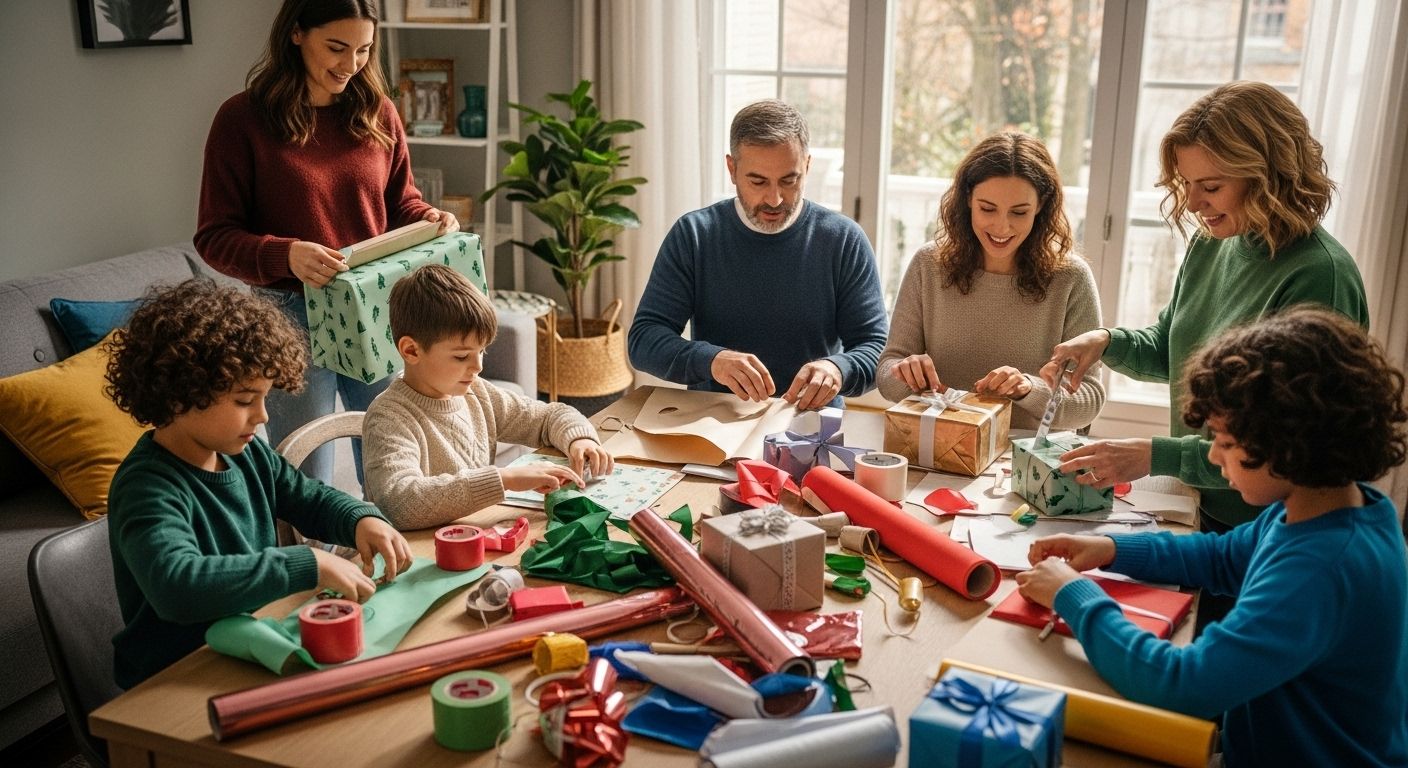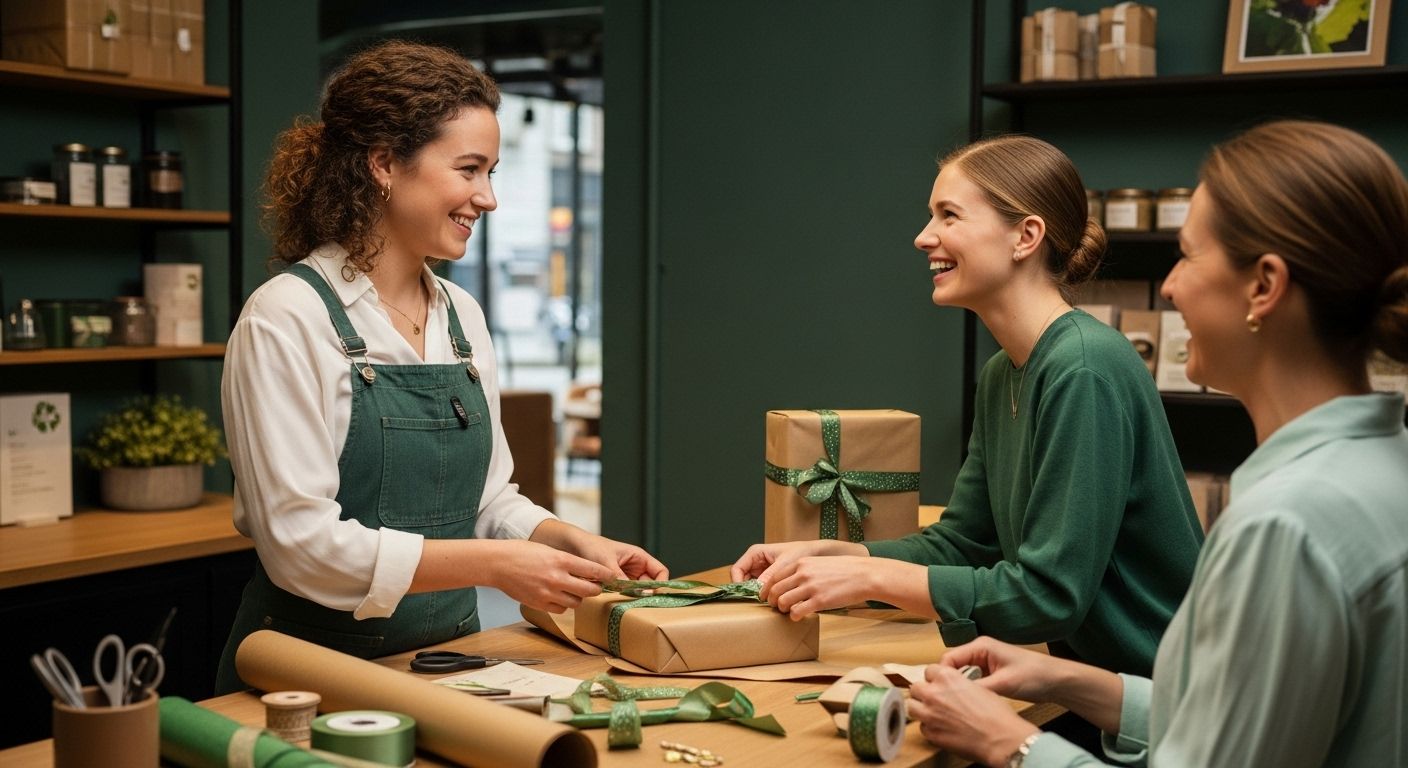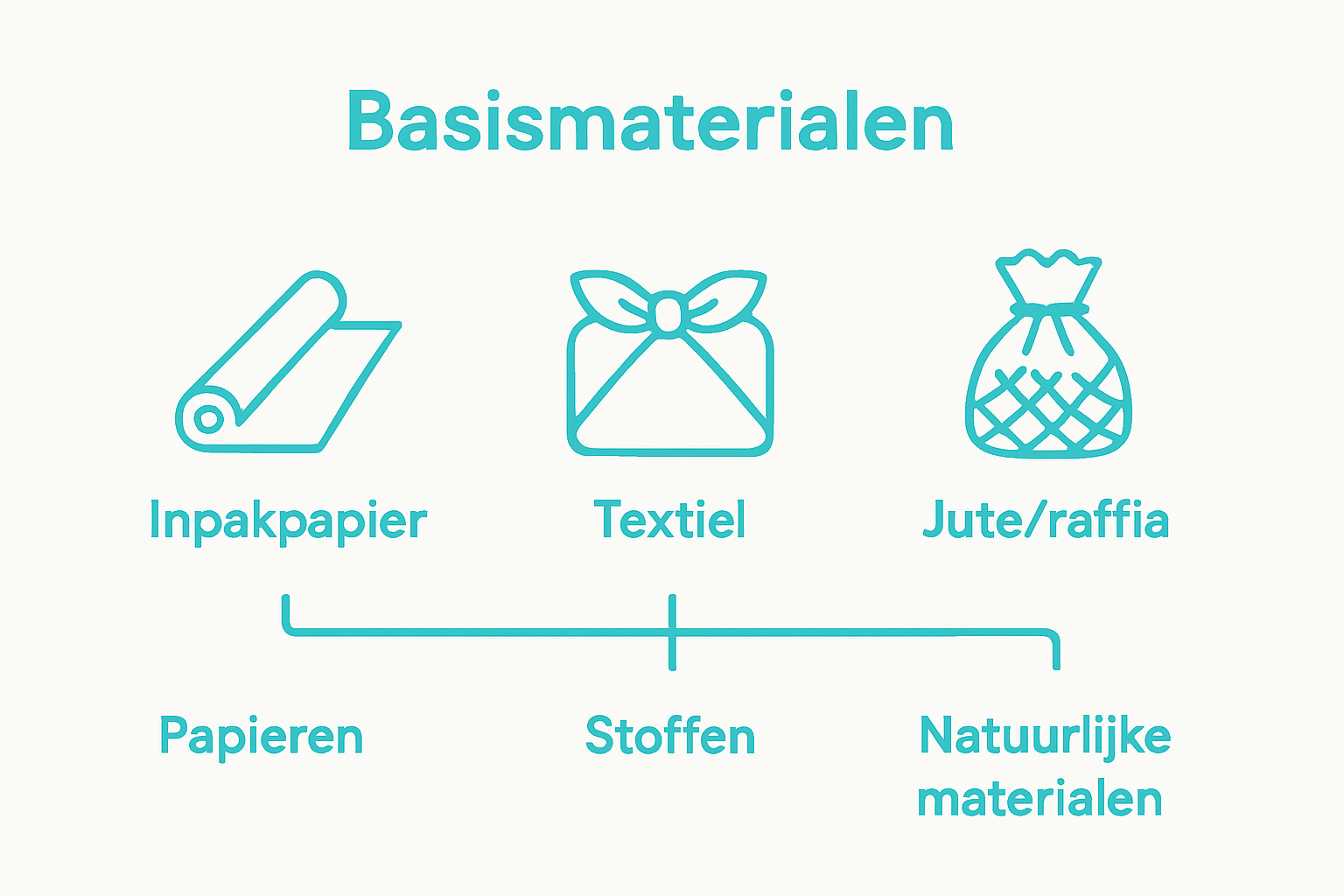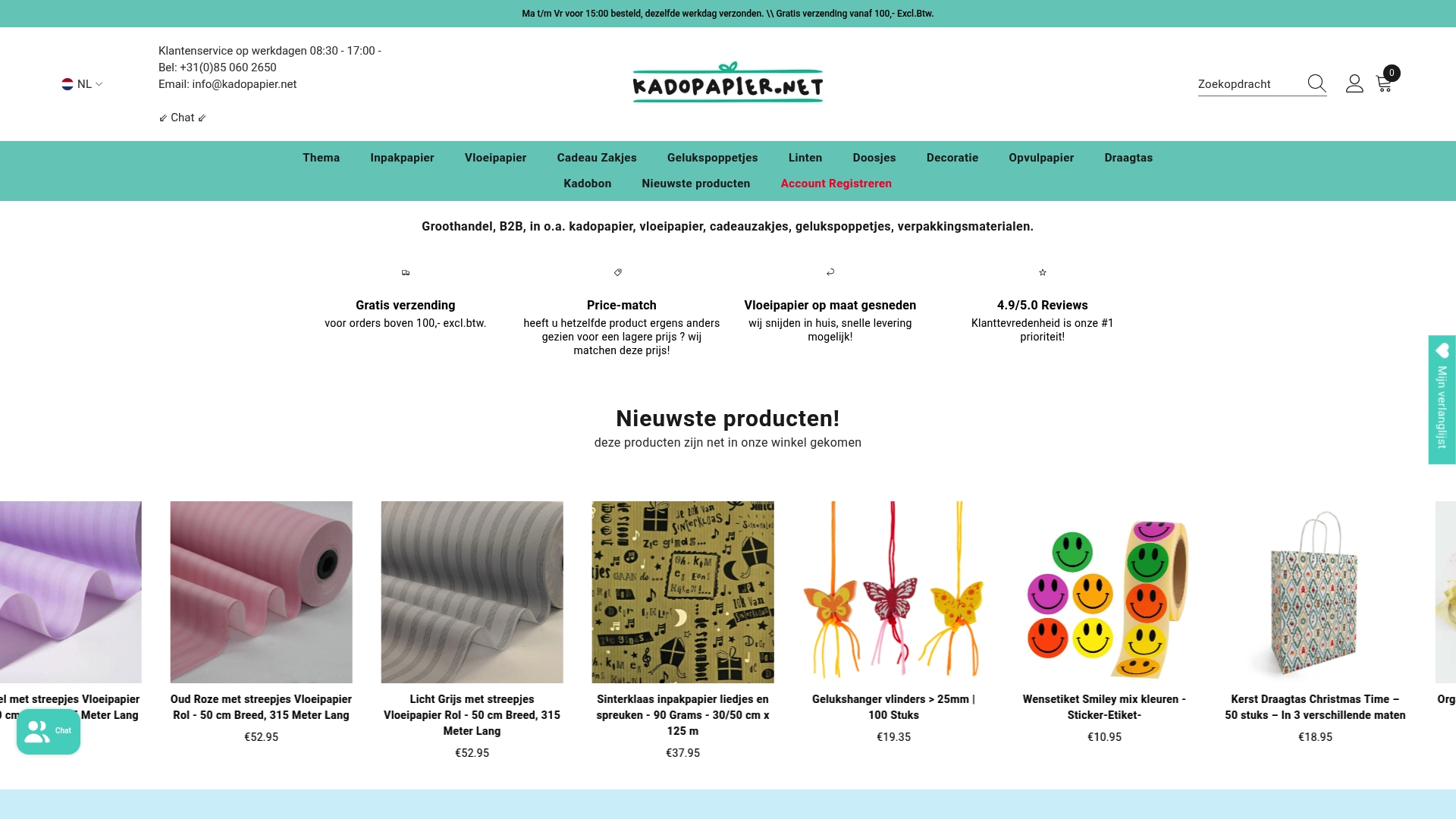Gift Wrapping Basics: What, Why, and How?

Gift wrapping may seem simple, but did you know that over 4 million tons of wrapping paper are used worldwide each year? Many people primarily think of beautiful paper or a ribbon. Surprisingly, it's the basic materials that make all the difference. The power often lies in those simple materials that no one thinks about, because they determine how special the gift-giving moment truly becomes.
Table of contents
- What are the basic materials for gift wrapping?
- Why are basic materials important for gift wrapping?
- How does choosing the right materials for gift wrapping work?
- What types of basic materials are there for gift wrapping?
- What are the trends and innovations in gift wrapping materials?
Quick Summary
| Takeaway | Explanation |
|---|---|
| Choose quality basic materials | Good quality is crucial for attractive and safe gift packaging. |
| Pay attention to the durability of materials | Choose materials that are recyclable or reusable to reduce environmental impact. |
| Match the materials to the gift | When choosing a material, consider the size, fragility and weight of the gift. |
| Increase emotional value with packaging materials | Key choices in packaging materials enhance first impressions and show care for the recipient. |
| Use innovative packaging solutions | Consider new trends like digitally printed materials and multifunctional designs for unique presentations. |
What are the basic materials for gift wrapping?
Gift wrapping is more than just a presentation; it's an art that begins with the right materials. Gift wrapping materials are the fundamental raw materials you need to carefully and attractively package a gift.
Essential Materials for Gift Wrapping
The basic gift wrapping kit includes a range of products that support your precision and creativity. Our practical guide to wrapping techniques will help you select the right materials.
Important basic materials are:
- Wrapping paper (various prints and solid colors)
- Scissors with sharp edges
- Adhesive tape or double-sided tape
- Decorative ribbons and bows
- Decorative labels or cards
Properties of Good Packaging Materials
When choosing basic materials, consider quality and functionality. Environment America emphasizes the importance of sustainable and reusable materials.
When selecting packing materials, there are some crucial considerations:
- Strength of the paper
- Environmental friendliness
- Suitability for various gift types
- Aesthetic appeal
Practical Considerations
Not every material is suitable for every type of gift. A book requires a different approach than a delicate object. Pay attention to the texture, thickness, and flexibility of your wrapping material. Soft materials like tissue paper are ideal for delicate items, while sturdier kraft paper is suitable for more robust gifts.
The art of gift wrapping begins with understanding and selecting the right materials. By making conscious choices, you not only create a beautifully wrapped gift but also show care and attention to the person you're giving it to.
Why are basic materials important for gift wrapping?
Gift wrapping materials are more than just functional items. They form the architecture of successful gift packaging and determine the first visual and tactile impression a recipient gets.
First Impression and Emotional Value
Your choice of wrapping materials immediately communicates your care and the value you place on the gift. Discover our advanced packaging tips for professional results.
Basic materials contribute to the emotional experience of a gift by:
- Creating anticipation and surprise
- Raising the recipient's expectations
- Showing personal attention and effort
Protection and Practical Functionality
According to research by a research institute, packaging materials are not only decorative but also essential for protection.
Practical functions of basic materials include:
- Protecting fragile gifts from damage
- Preventing moisture and external contamination
- Making gifts easily transportable
Sustainability and Environmental Awareness
These days, the environmental impact of packaging materials also plays a significant role. Conscious consumers are increasingly choosing materials that are recyclable and reusable .
When selecting base materials it is important to pay attention to:
- Environmentally friendly production methods
- Use of recycled or biodegradable materials
- Possibilities for reuse or composting
The right materials transform a simple gift into a special experience. They tell a story before the gift is even opened and make the recipient curious about what lies within.

How does choosing the right materials for gift wrapping work?
Selecting the right wrapping materials is a strategic process that requires more than just random choices. It requires careful consideration of the gift, the recipient, and the desired presentation.
Gift-Specific Material Selection
Discover creative wrapping tips for small gifts to refine your selection process. Each gift has unique characteristics that require specific wrapping approaches.
When choosing materials you should consider:
- Size and shape of the gift
- Fragility of the object
- Weight and stability
- Texture of the original gift
Analysis Process for Material Selection
Research from the University of Nevada, Reno, suggests that packaging choices significantly influence the receiving experience. A systematic approach helps in making the right selection.
The analysis process includes:
- Determining the need for protection
- Estimating the desired visual impact
- Evaluating environmental and sustainability aspects
- Consider budget and availability
Practical Selection Criteria
When choosing packaging materials, several crucial practical considerations are important. Quality and functionality should always be paramount.
Important selection criteria are:
- Material strength and durability
- Compatibility with decorative elements
- Personalization options
- Ease of use
The art of choosing the right packing material lies in finding the perfect balance between protection, aesthetics and a personal touch.
This table provides a quick overview of important selection criteria when choosing basic materials for gift wrapping.
| Selection criterion | Explanation |
|---|---|
| Quality | High-quality materials ensure appearance and strength |
| Sustainability | Materials that are recyclable or reusable |
| Gift-specific eligibility | Adjustment to size, fragility and weight of the gift |
| Aesthetic appeal | Visual impact and the possibility of personalization |
| Functionality | Ease of use, compatibility with decorative elements |
What types of basic materials are there for gift wrapping?
The world of gift wrapping offers a wide range of basic materials, each with unique properties and applications. Choosing the right material transforms an ordinary gift into a special experience.
Below you will find a clear table that groups the different types of basic materials for gift wrapping with their characteristics and typical applications.
| Type of base material | Features | Typical applications |
|---|---|---|
| Wrapping paper | Versatile, various prints and colours | General gift packaging |
| Kraft paper | Sturdy, rustic look | Environmentally conscious and robust packaging |
| Tissue paper | Soft, delicate, lightweight | Protection of fragile or luxurious gifts |
| Fabric cloths | Reusable, natural material | Sustainable and original gift packaging |
| Double-sided tape/adhesive tape | Invisible mounting, easy to use | Confirmation of paper and decoration |
| Decorative ribbons and bows | Decorative, various materials | Visual addition and decoration of gifts |
| Labels and cards | Customizable, informative | Personal message with the gift |
Paper Materials
Discover professional packaging materials for a comprehensive overview of available options. Paper materials form the backbone of gift wrapping and offer numerous variations.
Paper base materials include:
- Standard wrapping paper with various prints
- Kraft paper for a rustic look
- Tissue paper for delicate and refined packaging
- Recycled paper for environmentally conscious options
Alternative and Innovative Materials
Following research into sustainable packaging solutions, more and more innovative materials are being developed.
New and sustainable basic materials are:
- Reusable fabrics such as linen or cotton cloths
- Biodegradable packaging materials
- Natural materials such as jute or raffia
- Recycled packaging solutions
Decorative and Protective Additions
Besides basic materials, there are numerous additional elements that enhance the presentation and protection of gifts. Quality and functionality remain key principles.
Additional basic materials include:
- Different types of adhesive tape and double-sided tape
- Decorative ribbons in various widths and materials
- Protective filling material such as bubble wrap
- Decorative labels and cards
The art of gift wrapping lies in the creative combination of these basic materials. It's not just about covering a gift, but about creating a visual and tactile experience that surprises and enriches the recipient.

What are the trends and innovations in gift wrapping materials?
The world of gift wrapping is evolving rapidly, driven by technological advancements, environmental awareness, and changing consumer preferences. Innovations are transforming traditional approaches and opening up new perspectives for creative and sustainable gift wrapping.
Sustainability as a Central Trend
Discover our holiday wrapping inspiration for the latest sustainable packaging solutions. Environmental friendliness isn't a passing trend, but a fundamental shift in the packaging industry.
Key sustainability innovations include:
- Fully biodegradable packaging materials
- Materials produced from recycled raw materials
- Reusable packaging concepts
- Materials with a minimal ecological footprint
Technological Innovations
Further research into packaging trends shows a strong digital transformation in gift wrapping.
Technological innovations are:
- Digitally printed customizable wrapping paper
- Smart packaging with QR codes or interactive elements
- Augmented reality applications in packaging
- 3D printable packaging templates
Aesthetic and Functional Innovations
Modern gift wrapping goes beyond protection and decoration. Functionality and experience are becoming increasingly important.
Latest aesthetic and functional trends are:
- Modular packaging concepts
- Multifunctional packaging materials
- Minimalist and elegant designs
- Culturally inspired packaging styles
These trends demonstrate that gift wrapping is a dynamic field where creativity, technology, and sustainability converge to continually reinvent the way we present gifts.
Take your gift wrapping to the next level
The right basic materials make the difference between standard and personalized gift wrapping. You might recognize this: you want to give a beautifully wrapped gift, but you're unsure if you have the right materials. The choices for sturdy wrapping paper, matching ribbon, and decorations can be overwhelming. Do you want to prevent your gift from getting damaged during wrapping, or create that first wow factor when the recipient sees it? With the tips in this article, you'll understand how indispensable quality materials are, but where can you find everything conveniently in one place?

Discover the convenience of a complete range of high-quality wrapping materials at Kadopapier.net . From stylish wrapping paper in all shapes and prints to innovative tissue paper and decorative ribbons for every occasion. Visit our online store today so your next gift is not only beautifully wrapped but also looks safe and professional. Take the plunge now and unleash your creativity with the wide selection of basic materials at Kadopapier.net .
Frequently Asked Questions
What are the essential basic materials for gift wrapping?
The essential materials for gift wrapping are wrapping paper, scissors, tape or double-sided tape, decorative ribbons, and decorative labels or tags.
Why are basic materials important for gift wrapping?
Basic materials are important because they determine the first impression of the gift, add emotional value, protect the contents and contribute to the sustainability of the packaging.
How do I choose the right materials for gift wrapping?
Choose the right materials by considering the size and shape of the gift, its fragility, weight, and desired visual impact. Also, consider environmental and sustainability considerations.
What types of paper materials are available for gift wrapping?
There are several types of paper materials available, including standard wrapping paper, kraft paper, tissue paper, and recycled paper, each with unique applications and aesthetic characteristics.
